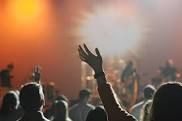
Noise-induced Hearing Loss (NIHL): A Worldwide Concern
In February 2015, the World Health Organization (WHO) warned that over 1 billion teens and young adults are at serious risk for noise-induced hearing loss. What has been written and talked about for some time, is fast becoming a sad reality.
Every insult counts!
No matter how or where it is generated, excessively loud sound ages human ears prematurely. The eventual damage extends to the inner-ear hearing cells as well as to the hearing nerve. The more frequent the exposures, the louder the exposures, the faster the aging proceeds. Sudden, explosion-type sounds can devastate the ears in no time at all.
10 possible reasons why NIHL remains a worldwide concern:
- Younger people take their hearing for granted and ignore warnings for caution.
- Noise is socially sanctioned. It’s still advertised as cool and fun when in reality it is highly toxic to the ears.
- The misconception that hearing loss is an “old people” issue persists. However, the numbers of those with noise-related hearing challenges are on the rise in every age group – starting with children.
- The toxic myth that ears become toughened or immune to noise fails to die.
- The damage from noise-inflicted injuries is invisible, bloodless and painless, unless one deals with a catastrophic noise event.
- Even when confronted with evidence of permanent noise-induced damage, people are reluctant to learn or to act.
- Noise-induced symptoms, such as tinnitus, decreased hearing and/or stuffy ears are not recognized as serious signs that damage has happened or has been aggravated.
- Overall, parents do not talk to kids about safe listening practices and about the dangers of excessively loud sound. Many admit that they do not know much about the issue themselves.
- There are few, if any, regulations on noise limits outside of the Industrial World. Private businesses, such as gyms, cinemas, restaurants/bars and even places of worship do not feel any responsibility when they serve up ear-damaging noise doses – and the public does not object.
- Manufacturers of personal entertainment equipment, children’s toys, appliances etc. are not kept to any legal sound standards. Packaging in most cases does not list how loud the merchandise is.
So, when is a good time to become smart on noise-induced hearing loss? That time is now, and there is not a second to waste.
****
For industry Safety Training on Noise-induced Hearing Loss Prevention or for community presentations, please see my website or email [email protected]
To learn about ears and hearing, please see my book on hearing loss: What Did You Say? An Unexpected Journey into the World of Hearing Loss, now in its second updated edition. Sharing my story and what I had to learn the hard way.